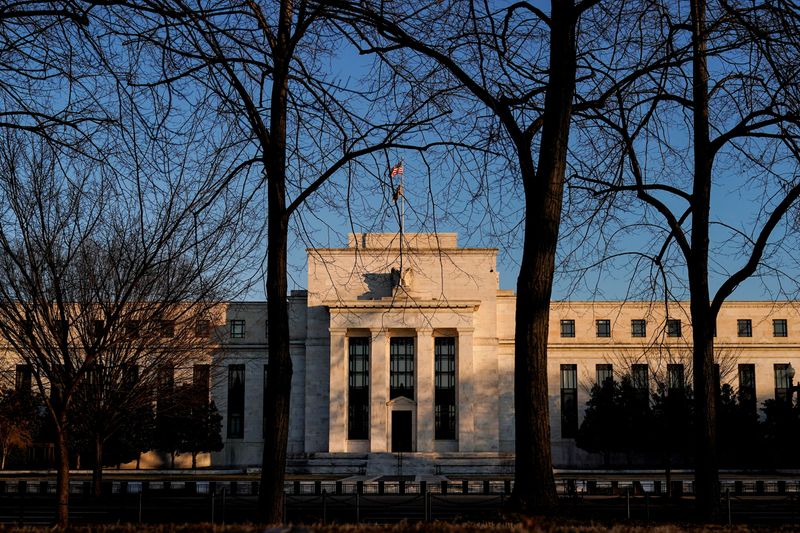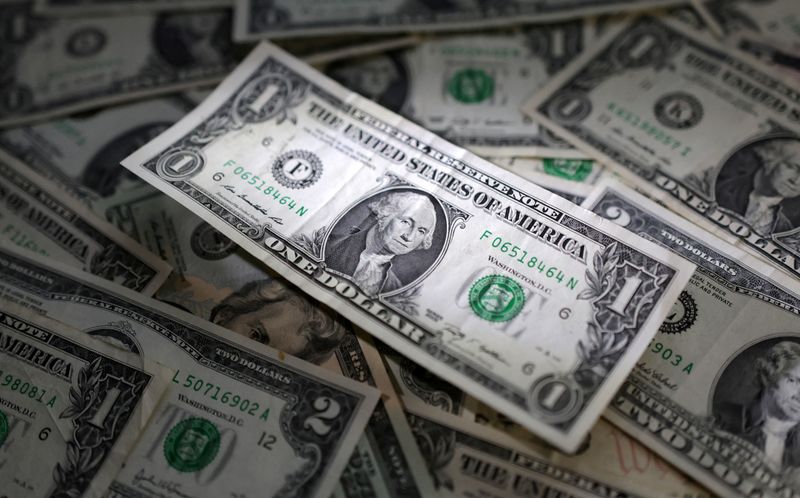
A look at the day ahead in U.S. and global markets from Mike Dolan
Faced with another monthly round of stubborn inflation and uncertainty about fiscal, tariff and immigration policy ahead, the Federal Reserve is getting cagier about the extent of further policy easing.
Fed boss Jerome Powell didn’t give much away in a keenly-watched set-piece speech on Thursday, but made it clear that the central bank still sees a robust economy and has a lot of new information to take on board in deciding just how much further it should lower interest rates.
“The economy is not sending any signals that we need to be in a hurry to lower rates,” Powell said at a Dallas Fed event.
With just 18 months to the end of his latest term at the helm of Fed, Powell seemed keen to sidestep questions on the policy decisions of Donald Trump’s incoming administration – bolstered as it was on Thursday by confirmation of a Republican clean sweep of Congress.
“We can do the arithmetic,” Powell said when asked on possible tariff hikes on imports and curbs on immigration, adding “this is getting me into political issues that I really want to stay as far away from as I possibly can.”
But on top of a hotter-than-forecast producer price report for October and another drop in weekly jobless claims, the interest rate markets continued to pare back expectations for Fed easing ahead. Retail and industrial numbers for October top Friday’s diary.
Futures now see just a 60% chance the Fed will cut rates again next month – and fewer than three quarter-point cuts are now fully priced over the next year. Some economists are now thinking Fed rates may not get back below 4% in this cycle.
Both the 12-month Treasury bill rate and the two-year note yield are now hovering just under 4.4%, with the 10-year benchmark just off five-month highs of about 4.45%.
And two-year market inflation expectations are settling in about 2.5% – well above the Fed’s 2% target. And with cash rates remaining elevated, money market fund assets continue to swell – with assets under management jumping more than $100 billion over the past week to another record of $6.67 trillion.
Wall Street stocks halted their immediate post-election surge this week and the dollar also saw its first daily retreat on Friday since the results unfolded over a week ago.
Attention switched to the state of other major economies, with nerves jangling about the threat of global trade war.
China’s latest economic health check showed a mixed bag of soft industrial readings and upbeat retail growth for last month. But pervasive gloom about possible U.S. tariff hikes, disappointment at recent stimulus details and ongoing property sector worries saw Chinese stocks drop again.
Chinese annual house price deflation deepened in October to 5.9% – its biggest drop since 2015 – even though the monthly decline moderated slightly to a fall of 0.5%. Property investment in China also fell at a faster 10.3% in the first 10 months of 2024 compared with 10.1% over January to September.
The CSI300 stock index lost almost 2% on Friday, completing its worst week since July – led by declines in the real estate sector. Hong Kong’s Hang Seng was only marginally in the red, but clocked a sixth straight day of declines.
The offshore yuan, however, perked up against a retreating dollar as the 10-year yield premium on U.S. Treasuries over Chinese equivalents steadied at the widest since May.
The dollar also fell back against Japan’s yen, with traders wary that excessive yen weakness may draw Bank of Japan intervention and the latest Japanese GDP readout above forecasts. With a key BoJ press conference due on Monday, Finance Minister Katsunobu Kato said the authorities would take appropriate action against sharp exchange-rate moves.
The darker global demand outlook, however, has seen crude oil prices fall back again despite this week’s drop in U.S. inventories.
Britain added to that cloud, showing its economy contracted unexpectedly in September and growth slowed to a crawl over the third quarter – an early setback for finance minister Rachel Reeves’ ambitions to kick-start growth.
In the euro zone, Germany’s economy continues to be the big worry. Even though the European Commission forecast a relatively brisk 0.8% expansion for the euro area this year, it cut its German estimate to show a 0.1% contraction.
European Central Bank board member Isabel Schnabel said the ECB should continue to use interest rates as its primary policy tool and extraordinary measures such as bond buying or far-reaching ‘forward guidance’ should be used only sparingly.
In company news, there was 6% rally in Walt Disney (NYSE:DIS) after the entertainment giant reported a quarterly earnings beat and robust guidance.
On the flipside, shares of automaker Tesla (NASDAQ:TSLA) closed down 5.8% and Rivian Automotive (NASDAQ:RIVN) dropped 14.3% on Thursday after Reuters reported that Trump’s transition team is planning to kill the $7,500 consumer tax credit for electric-vehicle purchases as part of broader tax-reform legislation.
In Europe on Friday, vaccine makers came under pressure after Trump said he had selected Robert F. Kennedy Jr., an environmental activist who has spread misinformation on vaccines, to lead the Department of Health and Human Services.
Overall, Wall Street stock futures were in the red ahead of Friday’s bell. Popular ‘Trump trades’, such as Bitcoin, were firmer again but well off this week’s highs and the leading cryptocurrency was back below the $90,000 level on Friday
Key developments that should provide more direction to U.S. markets later on Friday:
* US October retail sales, industrial production, import/export prices, New York Federal Reserve’s November manufacturing survey, September business/retail inventories

* New York Fed President John Williams and Boston Fed chief Susan Collins speak; European Central Bank chief economist Philip Lane speaks
* US corporate earnings: Sysco (NYSE:SYY), Progressive
This post is originally published on INVESTING.





